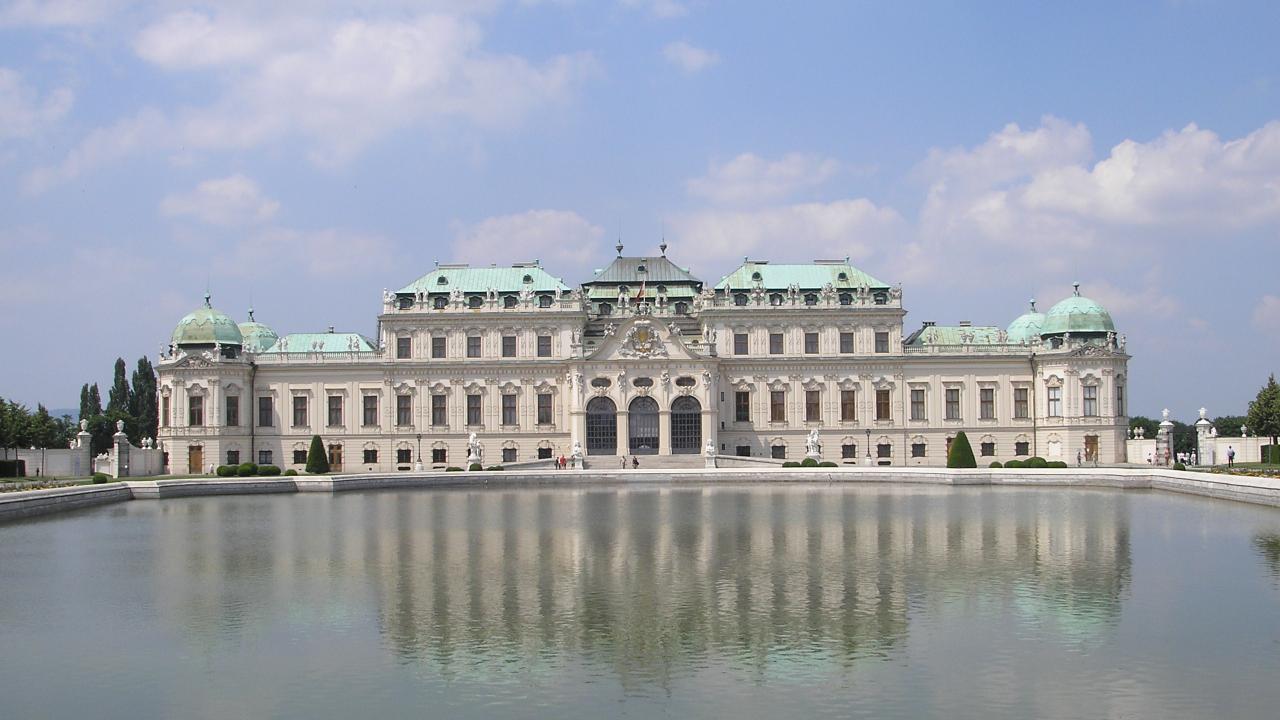Belvedere Castle
Upper Belvedere
Daily 10 am to 6 pm
Prinz Eugen-Straße 27, 1030 Wien
Lower Belvedere and Orangery
Daily 10 am to 6 pm
Wednesday 10 am to 9 pm
Rennweg 6, 1030 Wien
21er Haus
Wednesday to Sunday 10 am to 6 pm
Schweizergarten, Arsenalstraße 1, 1030 Wien
Palace Stables
Daily 10 am to noon
Rennweg 6, 1030 Wien
Magnificent Belvedere is divided into two palaces, the Upper and the Lower Belvedere, the Orangery and the Palace Stables. They were built as a summer residence in the 18th century by Prince Eugene of Savoy (1663-1736), who chose Johann Lucas von Hildebrandt (1668-1745) as his architect. Belvedere means "beautiful view" in Italian and indeed, the view is truly beautiful.
Within the Upper Belvedere you will find the most impressive collection of Austrian art from the Middle Ages to the present day and of course, world’s largest Gustav Klimt collection. Highlights are Klimt’s golden pictures The Kiss and Judith I, as well as masterpieces by Kokoschka and Schiele.
he splendid palace and its gardens are one of the world’s finest Baroque landmarks - same as the Prince in a queer kind of way. Being one of the greatest Habsburg generals, it is commonly known and agreed that Prince Eugene was gay. Although there are no contemporary written accounts, his sister-in-law is reported saying: “He doesn’t trouble himself with ladies, a nice couple of page boys would be more his thing.”
The short and not very attractive Savoyan contributed at the age of 20 to the rescue of Vienna, which was under siege by the Ottoman army. Just before that, French King Louis XIV had refused him to join his troops, so he ganged up with his bro, the Duke of Turenne, and shocked the court of Versailles by putting on women’s clothes. Supposedly the first drag queen show in history.
After a somewhat warmer welcome at Vienna, art-loving Prince Eugene served under Leopold I, Joseph I and Karl VI and conquered the Turks, who ruled all over Southeastern Europe at this time. A major victory was the liberation of Belgrade from Turkish rule. The imitation of the form of Turkish army tents in the green roof of Belvedere palace poses a remembrance to these victories.





